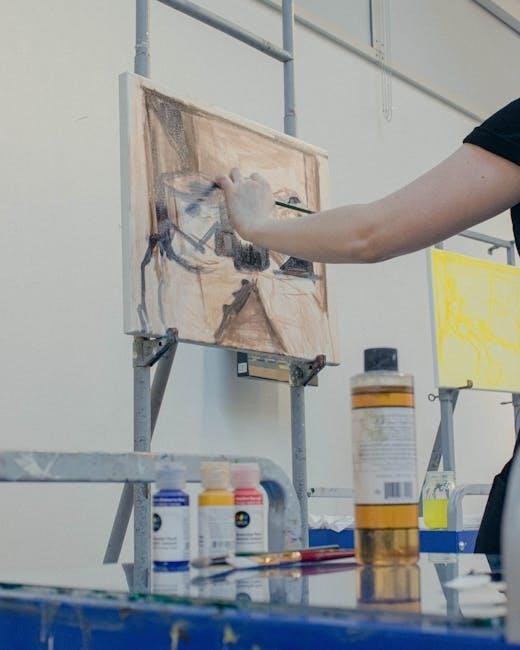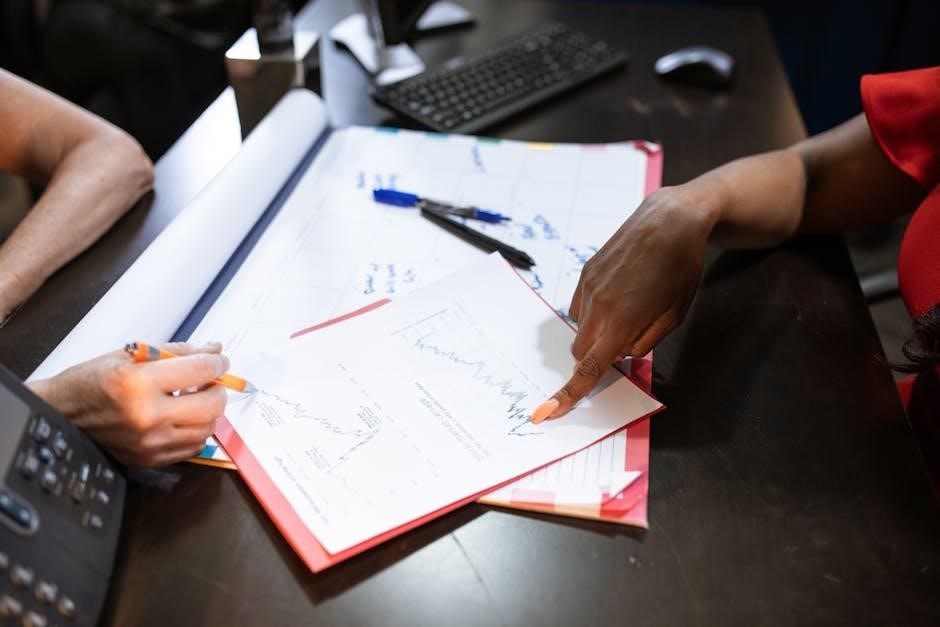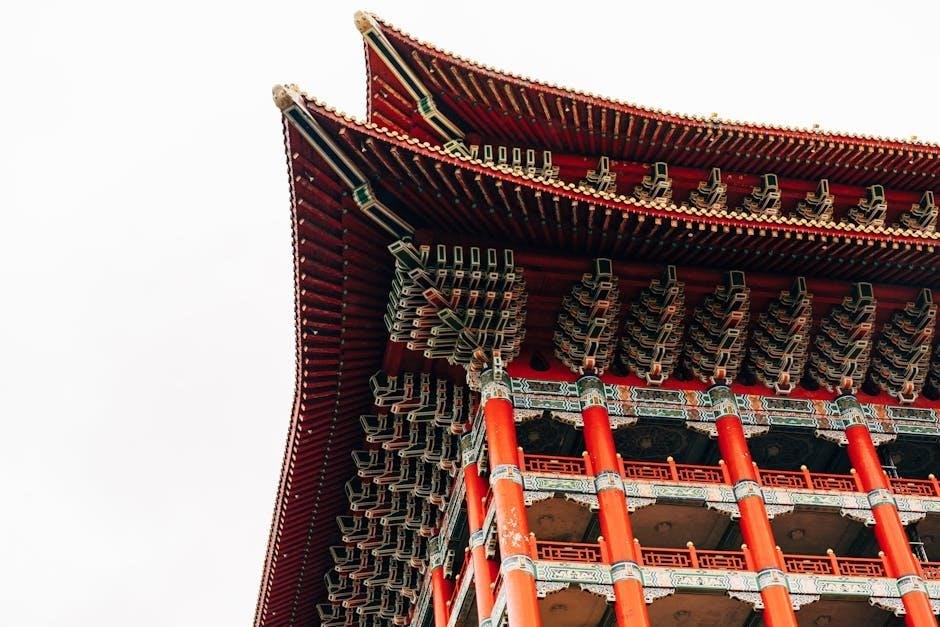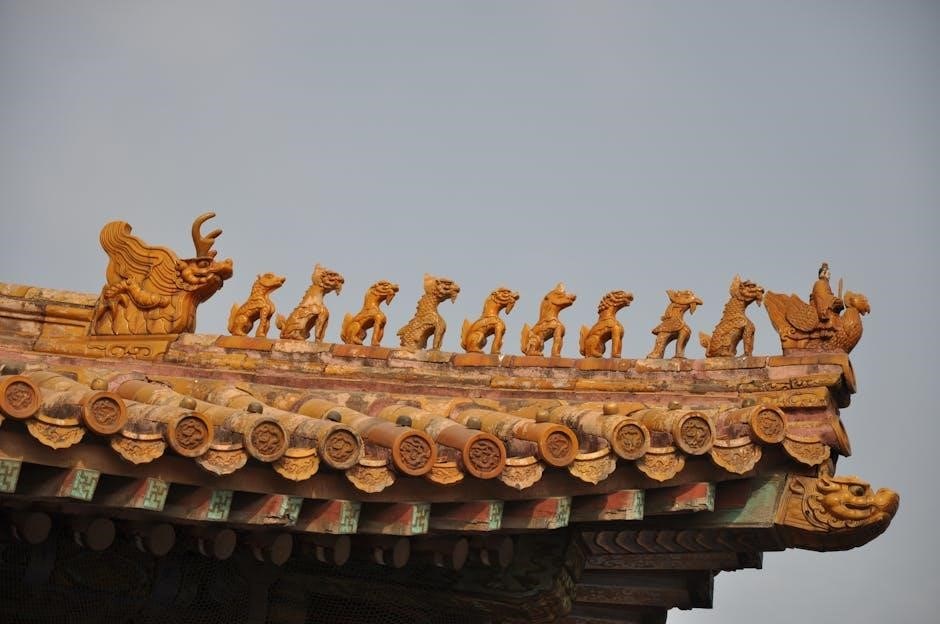tv guide maryville mo
Category : Guide
Welcome to the TV guide for Maryville‚ MO! Explore local channels and discover the perfect lineup for your home. Stay updated on live TV‚ streaming options‚ and United Fibers’ advanced packages. Your guide to entertainment starts here!

Local TV Broadcasters in Maryville‚ MO
Diverse broadcasters serve Maryville‚ including WDAF-DT and others offering strong signals. Residents enjoy a variety of channels‚ from news to entertainment. United Fibers provides advanced packages for tailored viewing experiences‚ while cable and satellite options expand access to additional networks.
2.1 Overview of Broadcast TV in Maryville
Broadcast TV in Maryville‚ MO‚ offers residents access to over-the-air channels‚ including WDAF-DT and WDAF-DT Rewind from Kansas City. Signal strength varies based on factors like location and building materials. Antenna TV is a primary source for local programming. Maryville viewers can enjoy a selection of channels tailored to their preferences‚ with options for news‚ entertainment‚ and sports. Broadcast TV provides a foundational viewing experience‚ complemented by cable and satellite services available in the area.
2.2 Major Broadcast Networks Available
Maryville‚ MO‚ residents can access major broadcast networks‚ including ABC‚ CBS‚ NBC‚ and FOX. These networks provide a wide range of programming‚ from prime-time dramas to breaking news updates. WDAF-DT‚ based in nearby Kansas City‚ brings channels to Maryville‚ offering viewers access to local and national content. Additionally‚ networks like PBS provide educational and cultural programming. These networks serve as the cornerstone of local broadcast TV‚ ensuring residents stay informed and entertained with high-quality shows and live events.
2.3 Local News Channels in Maryville
Maryville‚ MO‚ residents can stay informed through local news channels broadcasting in the area. United Fibers and other providers offer access to stations like WDAF-DT‚ providing up-to-date news‚ weather‚ and community updates. These channels deliver essential information‚ ensuring residents are connected to the latest events and local happenings. From live broadcasts to detailed weather reports‚ Maryville’s local news channels enrich the TV experience with trusted and relevant content.
2.4 Educational and Public Broadcasting Channels
Residents of Maryville‚ MO‚ enjoy access to educational and public broadcasting channels via United Fibers and other providers. These channels offer a rich variety of programming‚ including educational content‚ cultural documentaries‚ and children’s educational shows. Channels like WDAF-DT provide additional educational resources and community-focused content. United Fibers’ lineup also includes specialized programming for lifelong learning and public affairs‚ making these channels a valuable resource for residents seeking enriching and informative content.

Cable and Satellite TV Providers in Maryville
Maryville residents have access to various cable and satellite TV providers offering diverse packages. United Fibers and other providers deliver high-quality services‚ including live TV‚ on-demand content‚ and customized channel bundles. Explore these options for affordable and flexible entertainment solutions personalized to your preferences.
3.1 Overview of Cable TV Services
Cable TV services in Maryville‚ MO‚ provide residents with a wide range of entertainment options. United Fibers and other providers offer packages tailored to meet diverse needs‚ including live TV‚ on-demand content‚ and advanced features. With a focus on quality and flexibility‚ cable services ensure access to popular channels‚ premium content‚ and reliable connections. Explore the various cable TV plans available to enhance your viewing experience in Maryville.
3.2 Popular Cable Providers in Maryville
Maryville residents can choose from several cable providers offering diverse TV packages. Major providers include AT&T Internet and Spectrum‚ which deliver extensive channel selections and streaming options. These services provide access to live TV‚ premium content‚ and flexible plans. Evaluate factors like price‚ channel availability‚ and customer support to select the best cable TV provider for your needs in Maryville.
3.3 Satellite TV Options for Residents
Satellite TV providers offer excellent alternatives for residents of Maryville‚ MO. Services like Dish and DirectTV provide crystal-clear picture quality and a wide range of channels. Satellite TV is particularly beneficial for those seeking live sports‚ premium movies‚ and exclusive content. With its extensive channel lineup and HD options‚ satellite TV ensures a superior viewing experience. Residents can enjoy flexibility in choosing packages that best suit their entertainment needs.
3.4 Specialized Packages and Channels
Residents of Maryville‚ MO‚ can enjoy specialized TV packages tailored to their preferences. These packages often include premium sports channels‚ movie channels‚ family-friendly favorites‚ and niche genres like documentaries. United Fibers offers customizable bundles with options for sports fans‚ movie enthusiasts‚ and families. Additionally‚ over-the-air channels provide free access to local news and entertainment. Satellite TV providers also offer specialized packages with extra channels and features for an enhanced viewing experience.

TV Listings and Schedule for Maryville
Maryville’s TV listings provide a comprehensive guide to local shows and events‚ including United Fibers schedules and live broadcasts. Stay updated on popular series‚ sports‚ and community announcements. Explore over-the-air options and antenna TV for free programming. Keep track of your favorite shows with today’s latest updates!
4.1 Daily TV Listings for Maryville‚ MO
Daily TV listings for Maryville‚ MO‚ provide a comprehensive guide to local shows and events across broadcast‚ cable‚ and streaming platforms. Check United Fibers for the latest schedules‚ including popular series‚ movies‚ and live sports. Over-the-air options offer free programming‚ while antenna TV enhances access to additional channels. Stay informed about Maryville’s local programming and plan your viewing experience accordingly!
Now‚ let’s break down the answer for clarity:
Coverage: Mentions that the listings cover a range of platforms ⎯ broadcast‚ cable‚ and streaming.
Source: Points out that United Fibers is a primary source for updated schedules.

Content Highlights: Includes details on popular series‚ movies‚ and live sports to attract various viewers.
Additional Options: Discusses over-the-air TV and antenna TV as cost-effective alternatives.
This structured approach ensures that the daily TV listings are informative and user-friendly‚ catering to the diverse viewing preferences of residents in Maryville‚ MO.
4.2 Prime-Time Programming Highlights
Prime-time programming in Maryville offers a variety of entertainment options‚ including popular dramas‚ award-winning series‚ and family-friendly shows‚ showcased on local and cable networks. Residents can explore a diverse lineup of dramas‚ sitcoms‚ and reality shows‚ along with live sports and cultural programs. Local channels provide access to regional news and events‚ ensuring viewers stay informed and entertained. United Fibers offers Prime-time highlights through its advanced packages‚ allowing viewers to enjoy a curated selection of must-watch shows. The TV guide is accessible online and via mobile apps‚ ensuring residents never miss their favorite Prime-time shows.
4.3 Weekend TV Schedule in Maryville
Weekend TV in Maryville offers a vibrant lineup of entertainment‚ featuring live sports‚ cultural programming‚ and family-friendly shows. Saturday and Sunday schedules include popular series‚ sports events‚ and special broadcasts covering local news and community announcements. Residents can access weekend listings through the official TV guide website or mobile apps. United Fibers provides enhanced weekend packages with additional channels and exclusive content. Don’t miss live broadcasts and featured programming that bring the community together for quality family entertainment.
4.4 Live TV Guide for Current Shows
The live TV guide for Maryville‚ MO‚ provides real-time updates on current shows‚ ensuring residents never miss their favorite programs. Stay connected with live sports‚ exclusive series‚ and up-to-date news broadcasts. United Fibers offers a variety of channels‚ including WDAF-DT Antenna TV and Rewind TV‚ enhancing access to live content. Check the official TV guide or mobile apps for instant listings and seamlessly transition between live and recorded shows. Maryville viewers can enjoy a seamless experience with customizable packages tailored to their preferences.

Streaming and Over-the-Air TV Options
Maryville offers streaming services and over-the-air TV for diverse entertainment options. Antenna TV provides local channels like WDAF-DT‚ while streaming platforms expand viewing choices. Residents can access live broadcasts and on-demand content‚ enhancing their television experience.
word count: 25
5.1 Over-the-Air TV Signal Strength in Maryville
Over-the-air TV in Maryville‚ MO‚ offers access to local channels‚ though signal strength may vary. Residents can enjoy broadcasts from nearby areas‚ including channels like WDAF-DT Antenna TV and WDAF-DT Rewind TV from Kansas City‚ MO. Actual signal clarity depends on factors such as Your location and nearby structures.
word count: 107
5.2 Channels Available Through Antenna TV
Residents in Maryville‚ MO‚ can access local broadcast channels via antenna TV‚ including stations from nearby areas like Kansas City. Over-the-air signals provide free access to network affiliates and independent broadcasts. Channels like WDAF-DT Antenna TV and WDAF-DT Rewind TV offer news‚ sports‚ and entertainment content. While the number of channels may be limited‚ Maryville’s over-the-air setup ensures reliable local programming.
word count: 107
5;3 Streaming Services Complementing TV Guide
Residents of Maryville‚ MO‚ can enhance their TV experience with popular streaming services like Netflix‚ Hulu‚ and Amazon Prime. These platforms offer a wide range of movies‚ series‚ and exclusive content to complement local TV listings. Local streaming options provide additional entertainment choices for families and casual viewers alike. Pairing streaming services with Maryville’s TV guide ensures a diverse and convenient way to enjoy your favorite shows and discover new ones.
word count: 107
5.4 Best Streaming Platforms for Maryville Residents
Residents of Maryville‚ MO‚ can enjoy a variety of streaming platforms to enhance their at-home entertainment. Netflix offers a vast library of movies‚ TV shows‚ and original content. Hulu provides popular series and exclusive programming. Amazon Prime Video includes Prime Originals and live sports. Disney+ is perfect for families with its extensive library of Disney‚ Marvel‚ and Star Wars content. These platforms seamlessly integrate with the Maryville TV guide‚ offering viewers endless options to explore new shows and movies from the comfort of their homes.
word count: 107

Must-Watch TV Shows in Maryville
Maryville residents can’t miss popular dramas like “Stranger Things” and “The Crown.” Family-friendly shows like “The Simpsons” and “Parks and Recreation” delight all ages. Sports fans enjoy live games on local and national networks. Educational documentaries on public channels expand viewers’ horizons.
6.1 Popular Series and Dramas
Maryville residents can enjoy a variety of popular series and dramas across local and streaming platforms. WDAF-DT from Kansas City‚ MO‚ offers live TV and rewind options for fans of daytime soaps and primetime hits. United Fibers’ channel lineup includes must-watch dramas and series like “Stranger Things” and “The Crown.” Streaming services like Netflix and Hulu provide access to global hits. Explore the latest episodes and trending series using your local TV guide and streaming platforms‚ ensuring you never miss your favorite shows!
6.2 Family-Friendly Programming
Maryville families enjoy a variety of wholesome shows and movies on local channels and streaming platforms. WDAF-DT from Kansas City‚ MO‚ offers family-friendly content‚ including kids’ shows and educational programs. Streaming services like Netflix and Disney+ provide age-appropriate entertainment. United Fibers’ channel lineup includes family-oriented channels perfect for kids and parents alike. Parents can explore kid-safe options using the TV guide and parental controls to ensure children watch age-appropriate content. Plan family nights around fun and engaging shows with the Maryville TV guide!
6.3 Sports and Outdoor Channels
Maryville residents can enjoy a variety of sports and outdoor channels tailored to their interests. Local listings offer access to live games‚ fitness‚ and nature shows. United Fibers’ extensive channel lineup includes popular sports networks for football‚ basketball‚ and more. Outdoor enthusiasts can explore channels featuring hunting‚ fishing‚ and wilderness adventures. Plan your viewing around local sports events and live broadcasts. Ensure you’re connected through cable‚ satellite‚ or streaming services to catch all the action. Stay active and informed with Maryville’s sports and outdoor programming!
6.4 Educational and Documentary Channels
Maryville residents can explore a variety of educational and documentary channels to enrich their viewing experience. Local listings feature channels dedicated to history‚ science‚ nature‚ and cultural programs. Families can enjoy engaging content designed specifically for children‚ while adults can delve into in-depth documentaries and educational programming. These channels are accessible through cable‚ satellite‚ or over-the-air services. Stay informed and entertained with Maryville’s selection of enlightening TV shows and explore the world from the comfort of your home.

United Fibers TV Guide for Maryville
United Fibers offers a comprehensive TV guide featuring customizable channel bundles and advanced packages. Explore their lineup‚ including the Advanced Lite package‚ and compare it with other providers. Access detailed listings for local shows and services tailored to Maryville residents.
7.1 Channel Lineup Options
United Fibers provides a structured channel lineup for residents in Maryville‚ MO through its residential TV guide. The service offers a range of options‚ ensuring that viewers can access a variety of channels tailored to their preferences. These include local broadcast channels‚ as well as additional services like WDAF-DT Antenna TV and WDAF-DT Rewind TV from Kansas City‚ MO. The available channels may vary based on signal strength and other factors‚ making United Fibers a flexible and reliable choice for Maryville residents seeking diverse entertainment options.
7.2 Advanced TV Packages
United Fibers offers advanced TV packages tailored to meet the diverse needs of Maryville residents. These packages include premium channels‚ sports networks‚ movie channels‚ and more‚ ensuring a wide range of entertainment options. Customers can customize their to include additional services like WDAF-DT Antenna TV. The lineup may vary based on signal strength and availability‚ providing flexibility for viewers seeking the best TV experience.
7.3 Customizable Channel Bundles
United Fibers provides customizable channel bundles‚ allowing residents to tailor their TV experience to their preferences. Customers can choose from a variety of channels‚ including sports‚ movies‚ news‚ and more. These bundles offer flexibility‚ ensuring you get exactly what you need without paying for unnecessary services. Whether your interests lie in live sports‚ streaming content‚ or local programming‚ there’s a bundle to suit every lifestyle. Explore the options and find the perfect fit for your home entertainment needs.
7.4 United Fibers in Comparison
United Fibers stands out as a top choice for TV service in Maryville‚ MO‚ offering a diverse range of channel bundles and advanced TV packages. Compared to other local providers‚ United Fibers provides superior signal strength and a wider selection of channels‚ including streaming and over-the-air options. Their customizable packages ensure affordability and flexibility‚ catering to both casual viewers and entertainment enthusiasts. When compared to cable‚ satellite‚ and internet TV services‚ United Fibers offers a cost-effective and reliable solution‚ making it a preferred choice for residents seeking high-quality TV guide options.
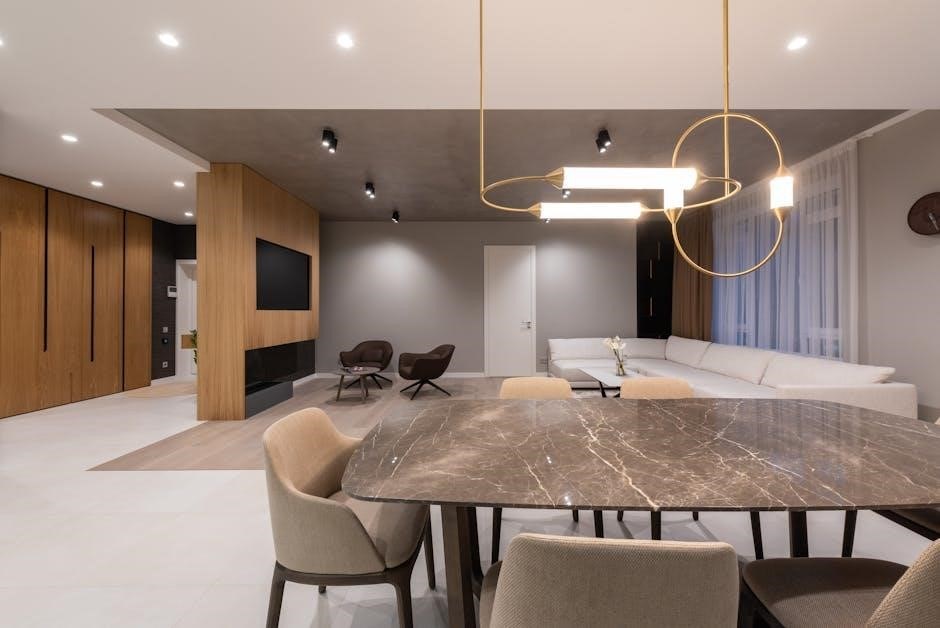
Local Events and Broadcasts in Maryville
Maryville residents can catch live sports‚ festivals‚ and town announcements through local broadcasts. Ensure you don’t miss any community highlights by checking our TV guide website regularly for event schedules and special live shows.
8.1 Community Announcements
Community Announcements
Stay informed about important updates and events in Maryville through community announcements featured on local TV channels. These broadcasts include updates on town hall meetings‚ local festivals‚ emergency alerts‚ and other relevant news. Whether it’s a public safety message or a community event‚ these announcements keep residents connected. Check your TV guide for live schedules and ensure you don’t miss any critical information or activities happening in Maryville.
8.2 Live Sports and Events
Stay connected to the excitement of live sports and community events in Maryville‚ MO! Local TV channels offer broadcasts of high school games‚ college tournaments‚ and professional matches. Whether it’s football‚ basketball‚ or other sports‚ viewers can catch all the action live. Don’t miss out on special community events‚ parades‚ or festivals showcased on local stations. Plan your viewing schedule to enjoy the thrill of live sports and events in Maryville!
8.3 Educational and Cultural Programming
Discover a variety of educational and cultural programs in Maryville‚ MO‚ designed to enrich and entertain viewers of all ages. Local channels feature documentaries‚ educational series‚ and workshops on topics like history‚ science‚ and the arts. Cultural events‚ such as festivals and performances‚ are also showcased‚ providing a glimpse into Maryville’s vibrant community. These programs offer a unique opportunity to learn and engage with the world around you‚ all from the comfort of your home.

Resources for TV Guide in Maryville
Explore official resources for Maryville‚ MO TV guide listings‚ including websites‚ mobile apps‚ and customer support. These tools provide detailed schedules‚ live TV options‚ and United Fibers channel information to enhance your viewing experience.
9.1 Official TV Guide Website
Visit the official TV guide website for Maryville‚ MO‚ to explore channel listings‚ schedules‚ and live TV options. This resource provides comprehensive information on broadcasts‚ United Fibers packages‚ and streaming services. Stay informed about local programming‚ sports events‚ and community announcements with just a click. It offers a user-friendly platform for residents to discover entertainment options in Maryville‚ making it an essential tool for planning your TV viewing experience.
9.2 Mobile Apps for TV Listings
Stay connected with live TV and channel listings at your fingertips using mobile apps for Maryville‚ MO. Apps like TV Guide Mobile or MyTV let you explore schedules‚ set reminders‚ and access streaming options. These tools provide real-time updates on local broadcasts and United Fibers packages‚ ensuring you never miss a show. Whether you’re on the go or at home‚ these apps simplify planning your viewing experience in Maryville. Download them today for seamless access to your favorite channels and programming!
9.3 Customer Support and Contact Info
For assistance with your television service‚ including TV guide listings‚ United Fibers offers dedicated customer support. Contact their team via phone‚ online chat‚ or visit their office for personalized help. Find details on their official website or through the Maryville TV guide resources. Their support team assists with scheduling issues‚ troubleshooting‚ and billing inquiries. Ensure you’re connected to the right channels and services with prompt‚ reliable support in Maryville‚ MO. Don’t hesitate to reach out for any questions or concerns related to your TV service!






























